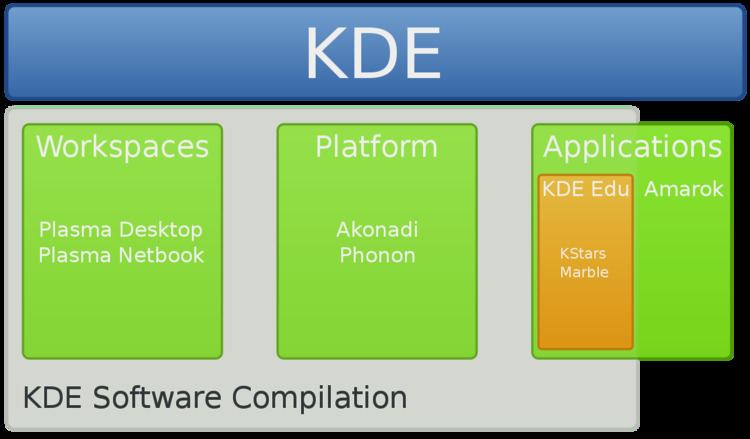Original author(s) Development status Maintenance | Developer(s) KDE Written in C++ | |
 | ||
Initial release 11 January 2008;9 years ago (2008-01-11) Last release 4.14.12 (September 15, 2015; 17 months ago (2015-09-15)) [±] | ||
KDE Platform 4 is a collection of libraries and software frameworks by KDE that serve as technological foundation for KDE Software Compilation 4 distributed under the GNU Lesser General Public License (LGPL). KDE Platform 4 is the successor to KDElibs and the predecessor of KDE Frameworks 5. KDE Platform 4 is the only version of KDE Platform, see KDE’s brand repositioning.
Contents
Technologies
Technologies superseded in KDE Platform 4
KParts
KParts is the component framework for the KDE Plasma desktop environment. An individual component is called a KPart. KParts are analogous to Bonobo components in GNOME and ActiveX controls in Microsoft's Component Object Model. Konsole is available as a KPart and is used in applications like Konqueror and Kate.
Example uses of KParts:
Solid
Solid is a device integration framework for KDE Platform 4, the current release of KDE. It functions on similar principles to KDE's multimedia pillar Phonon; rather than managing hardware on its own, it makes existing solutions accessible through a single API. The current solution uses udev, NetworkManager and BlueZ (the official Linux Bluetooth stack). However, any and all parts can be replaced without breaking the application, making applications using Solid extremely flexible and portable. Work is underway to build a Solid backend for the Windows port of KDE based on Windows Management Instrumentation.
Solid is broken up into many hardware “domains” which operate independently. Domains may be added as needed. For instance, one domain may be Bluetooth, and another may be power management. Solid is used extensively within KDE 4 and its popular applications, making them more aware of hardware events and easier to develop.
